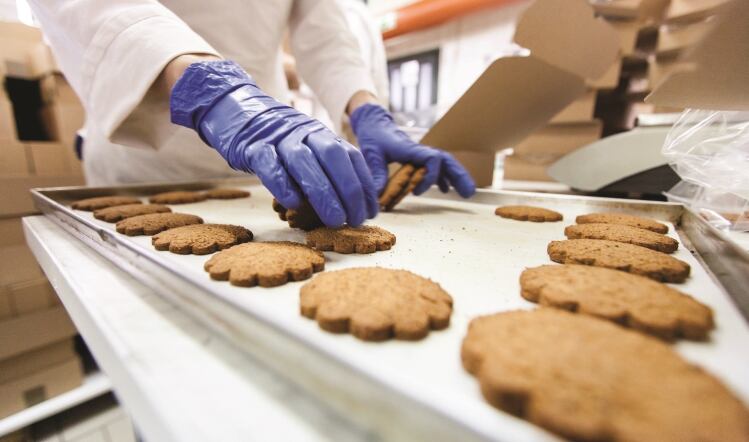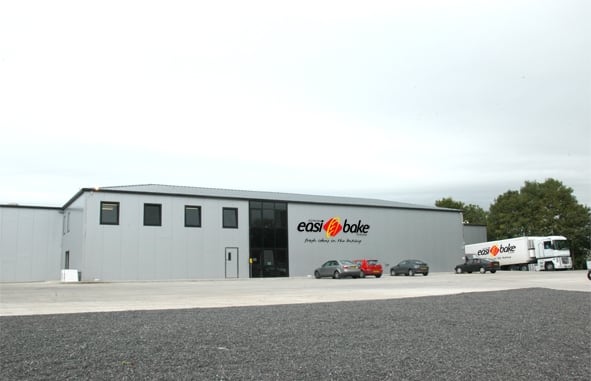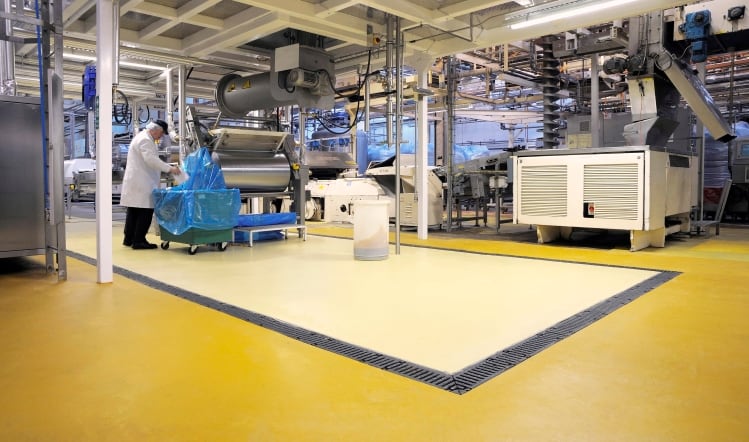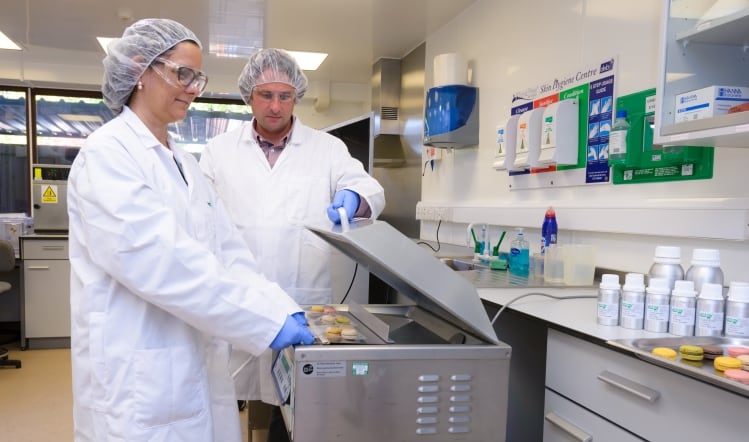If safety in bakery plants were not already a high enough priority, the current regulatory landscape should be focusing the minds of factory managers like never before.
Issue 8 of the British Retail Consortium Global Standard, which becomes active in February 2019, puts a greater emphasis on the development of a ‘product safety culture’, while encouraging bakers to develop more sophisticated security and food defence systems.
The impact of bakery hygiene on worker safety, meanwhile, has come under scrutiny from the Health and Safety Executive (HSE) in recent months, with a special focus on flour dust – a leading cause of workplace asthma.
Drivers such as these are pressing bakeries to push hygiene even higher up the agenda. Thankfully, developers of processing equipment are rising to the challenge by putting hygiene and easy cleaning at the forefront of their latest designs.
In the high-output tin and pan bread bakeries, plant managers are becoming increasingly aware of the ease with which a machine can be taken apart for deep cleaning, says Keith Graham, business development manager at Baker Perkins. “When we are considering machine design, the ability to disassemble it to reach every possible part is taken into account.”
The new Baker Perkins Series3 rotary moulder for soft dough biscuits and cookies is a good example, Graham suggests. “Everything that can be outside the frames is outside, since parts inside the frames attract debris that does not fall to the floor and has to be manually cleaned,” he explains.
“A design requirement is that parts inside the frames should be easily removable without the use of tools.”
Other commercial trends also tie in with the push for easy cleaning. The pressure to produce an ever-wider range of value-added products – among high-output plant bakers as well as smaller specialist producers – is unrelenting.
“High-output bakeries are seeking to make a wider range of products and the shelf-life issue means this has to be done every single day,” says Graham.
“For cost reasons, most do so on a single line rather than install additional equipment. Therefore, easy cleaning and simple maintenance are essential to achieve rapid turnaround between product runs.”
Demands on brands
The demands consumers are placing on brands to offer variety mean batch sizes and frequency of product changeovers have increased exponentially, confirms Jason D’Arcy, VFFS product manager at Bosch, which makes vertical packaging systems for bakeries and snack makers.
As a result, more frequent sanitising of equipment is required, which must be carried out efficiently to minimise associated downtime, D’Arcy suggests.
Metal detection gets a multi-lane makeover
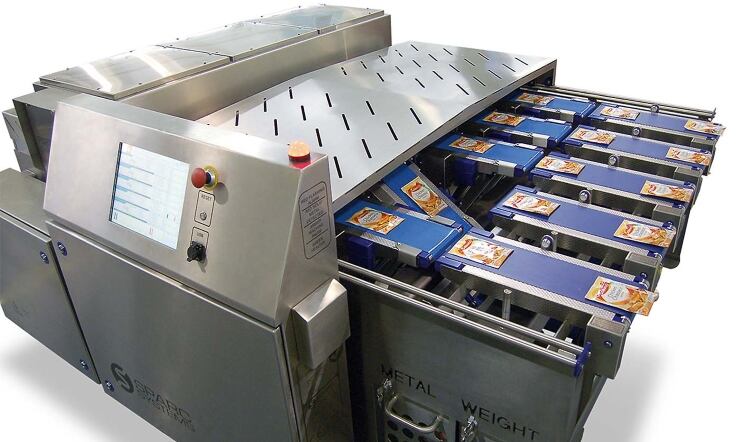
Metal detection, X-ray and checkweighing equipment is without doubt as important in bakery as any other food sector.
To help with the specific demands of bakery processing, Interfood Technology is now offering multi-lane versions of the Sparc Systems range (see above) – an option it claims is not widely available in the current market.
Designed for high-speed lines where the products remain in the multi-lane format throughout the line, Interfood says the systems offer excellent control and efficiency.
The X-ray range includes the capability to retrospectively add checkweighing and vision inspection into the machine. This gives the processor the potential to meet changing and expanding requirements, without the need for investing in a new dedicated piece of equipment and not impacting on the length or configuration of the line, Interfood says.
Full-line set-up and vision inspection is available through the SparcEye system. When combined with X-ray detection, the equipment measures just 2.8 metres in length. The machines are all electric, so do not require compressed air – giving the lowest cost of ownership in the industry, Interfood claims. All of the machines are also offered with a live data collection software option.
Interfood is the sole representative in the UK and Ireland for the Sparc Systems range of weigh-grading, multi-lane weighing and bespoke conveyors, checkweighers, and combination checkweigh/metal detection units. The range is offered through Interfood Packing Solutions, one of its seven divisions.
“Areas such as ease of access to parts for sanitation should be considered, as well as tool-less removal of those parts, as the ability to remove, clean and replace a component with ease can contribute greatly to uptime,” he adds.
“Everything, down to the smallest detail, must be considered – from how the framework (increasingly stainless steel versus painted carbon steel) reacts to cleaning methods, to how work surfaces can be rounded, tilted and redesigned to minimise flat parts, leaving no crevices or corners to trap foods, reducing bacterial build-up significantly.”
Effective cleaning between batches does not always mean aggressive washdown procedures, says D’Arcy – provided systems are designed with easy cleaning in mind and they are not handling sticky products.
“For bakery and snacks manufacturers, cleaning is typically undertaken with either a dry wipe down or a bucket and damp cloth wipe down,” he adds. “This is a controlled way to sanitise a system and to be certain of the effectiveness of those processes. Both are non-aggressive in approach.
“Vertical systems designed with rounded edges, reduced holes and an open workspace make them particularly ideal for the packaging of products that can be simply wiped from the surfaces – which are common in the bakery and snacks sector. Dry products, such as nuts, dried fruits and powders can all be wiped away quickly and effortlessly, allowing optimal hygiene levels to be achieved.”
Of course, it’s a different story when dealing with sticky dough, and Baker Perkins has recently added several features to its systems that it claims make cleaning dough deposits easier. The Tweedy high-speed dough mixer, for instance, now features a wash-in-place system for the bowl plus a self-clearing drain valve for quick and easy cleaning.
Washdown capability is also the latest development on the company’s Accurist2.1 dough divider. All mechanisms between the frames of the divider are now made from stainless materials, while sealed-for-life bearings enable chemical foam-and-rinse hose-down cleaning.
“Washdown allows thorough cleaning, and a customised low-pressure spray gun is supplied,” says Graham. “The divider can be wheeled away from the production line to prevent cross-contamination.”
It’s not only the suppliers of complete machines that are supporting bakers looking to make hygiene a top priority. Manufacturers of subsystems and components are also reflecting the hygiene trend in their development work.
At trade show IBA, held in Munich in September, Nord Drivesystems unveiled a range of cost-effective, hygiene-friendly drive units for the baking industry.
The lightweight, corrosion-resistant drive units, smooth motors, frequency inverters and motor starters are housed in washdown-optimised cast aluminium to provide an economical alternative to stainless steel geared motors. This is possible thanks to a specialised surface treatment developed by the company.
Corrosion-resistance
Corrosion-resistance is crucial for equipment subject to regular washdown and Nord Drivesystems says its treatment process, known as ‘nsd tupH’, is the answer for aluminium drives. According to the company, the procedure hardens the material below the surface.
An electrolytic process creates a protective layer that is permanently bonded to the substrate material, giving the aluminium similar corrosion-resistance to that of stainless steel and making it easily able to withstand high-pressure steam washing.
Washdown procedures have also been brought into sharp focus by the growing concern over acrylamide in baked goods, which necessitates the effective removal of carbon residues from conveyors and ovens.
Ipco (previously known as Sandvik Process Systems) makes solid and perforated steel bake oven belts for bakeries that are typically looking to produce multiple products on a versatile single line. The company says these belts are easier to clean than mesh belts, as well as using less energy to heat.
In response to the acrylamide issue, Ipco has launched an innovative salt-based QuickCleaner system to enable what it says is fast, easy and safe removal of carbon residues and acrylamide from its conveyors.
QuickCleaner blasts a combination of sodium bicarbonate (baking soda) and calcium phosphate onto the moving belt, removing the bulk of any residue without damaging the steel. The chemical action of the salt cleaner then attacks any remaining organic residues at a molecular level, further enhancing the cleaning.
A built-in suction hood removes the cleaning material from the belt as part of the same process. The Swedish company also showcased the new system at IBA.
It’s evident, then, that equipment suppliers are working to meet the growing demand from bakeries to optimise hygiene, and thus food safety. However, observers suggest that the potential impact of flour dust on the respiratory health of workers is still not generating as much attention as it deserves from bakers, in spite of the fact that the HSE highlights flour dust and enzymes containing additives such as amylase as the second most common cause of occupational asthma.
“Bakeries are still quite ignorant of the risk involved, and we’re talking about big ones, not just the small craft bakeries,” says Adrian Sims, director of Vent-Tech and vice chair of the Institute of Local Exhaust Ventilation Engineers. “The attitude seems to be ‘it’s flour dust – it’s a bakery, what do you expect?’”
Part of the issue is that local exhaust ventilation (LEV) systems can be expensive and it’s hard for some companies to see the value of such an investment compared to the comparatively low-cost approach of issuing staff with personal respirators. However, Sims insists that these are not a suitable alternative.
“Personal respirators [RPE] should be considered for very dusty tasks in situations where dust extraction is impossible,” he advises. “Remember, RPE is the last line of defence and should only be used ‘in conjunction with other engineering controls’.”
Not fit for purpose
Sims also believes there are a lot of systems out there that are not really fit for purpose. So what should responsible employers do to ensure they are not specifying the wrong thing or being mis-sold an inappropriate LEV system?
“The first step should be to get an independent company to come in and do some monitoring to find out how much dust is in the air,” says Sims.
“As engineers, we like to have numbers to work with. If we know how much dust is in the air we can give a guarantee about how much we can reduce that. Having an independent company do the measurements also means you can have them back in afterwards to check that the LEV company is meeting its guarantee.”
He adds that the cost of an upfront survey is likely to be minuscule compared to the price of an LEV system. “These systems cost tens of thousands of pounds or even hundreds of thousands sometimes, so why not spend £1,500 to get the right measurements taken? It’s a no-brainer. The LEV company should then be able to give you a guarantee about how much they can reduce the dust in the air. If they can’t, then they’re not a competent company.
“We see LEV companies that are happy to guarantee that a fan will move some air, but so what? If it doesn’t suck the dust away, it just sucks! We would give a guarantee that we can reduce the dust to a safe level.”
Since flour dust is such a potent allergen, the ALARA (as low as reasonably achievable) principle applies, rather than a specific parts per million limit set out in regulations.
“Exposure levels must be reduced as far below the WEL [workplace exposure limit] of 10 mg/m3 as is reasonably possible,” explains Sims.
“You are also required to follow Control of Substances Hazardous to Health surveillance checks on your employees. This is checking for any adverse effects related to work, including checking skin for dermatitis or asking questions about breathing.”
If a full LEV system is out of reach, there may be operational changes bakeries can make that will have a big impact on dust levels. Sometimes that can be as simple as vacuuming up any spillages instead of sweeping, for example, or mixing very slowly until flour is incorporated in order to generate less dust.
Other tips include enclosing flour handling systems, minimising the height from which flour is sifted or weighed, careful rolling and folding of flour sacks to avoid generating a plume and keeping a lid on flour containers unless they need to be opened.
Low-dust release flours may also be an option. These products have been treated to generate up to 80% less dust.
German company Goodmills Innovation offers a range of low-dust processing flours that have been around for some time, but the company says that uptake remains low so far among British bakers.
Cost may have something to do with it, but Goodmills insists that it’s money well-spent because losing less flour as dust can result in 70% less flour being needed in the long term, as well as cutting cleaning costs
New extruder can boost quality and yield
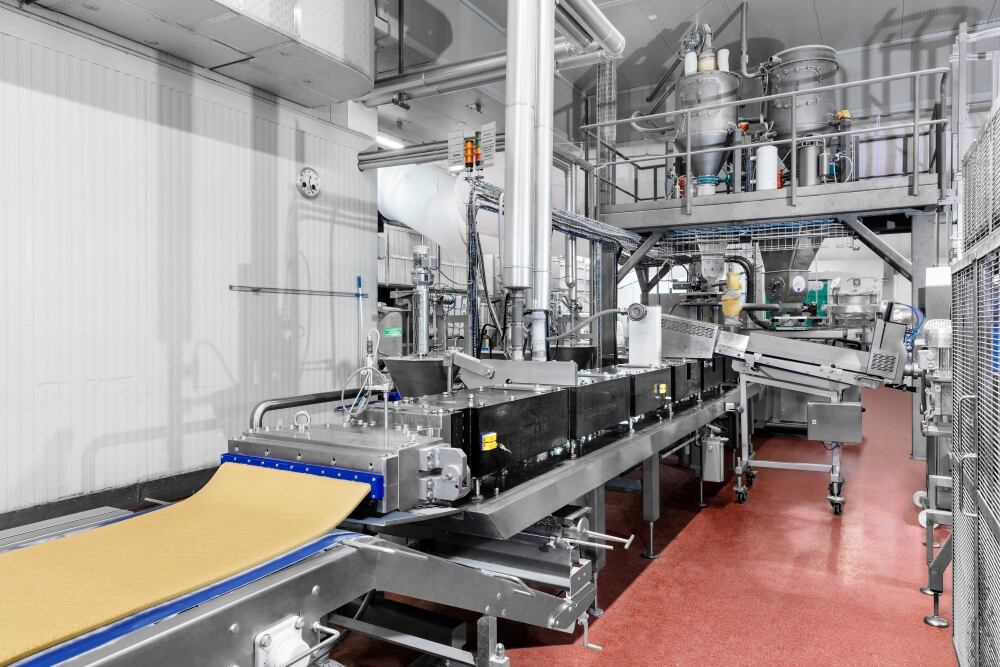
When Austrian bakery specialist Haas was acquired by Bühler Group in January, the expanded business said it was committed to becoming a ‘centre of expertise’ for the sector. Part of this journey was realised at bakery, snacks and confectionery trade show IBA, held in Munich in September.
“We now offer systems that meet all demands and requirements of our customers, whether it concerns dough production, shaping, baking or finishing,” says Johannes Wick, chief executive of Bühler’s Grains & Food business. “Customers can turn their product ideas into reality with a trusted contact on the basis of our production kit,” adds Haas chief executive Germar Wacker.
Unveiled at IBA was the ContiMix, a continuous twin-screw extruder (see left) that Bühler says can offer customers a more intense taste, higher volumes, and a better crumb texture. Thanks to a greater dough yield of up to 9%, increased plasticity, and the elimination of additional process steps, the ContiMix enables direct savings, it claims.
With a 2,400kg dough capacity, the extruder is said by the Swiss firm to be ideal for the production of consistent laminated doughs for products such as puff pastry sheets, as well as for flat or shaped products. Aided by a wide range of configuration options, the continuous process makes it possible to eliminate any additional standing time for the dough and the associated dough handling, reducing the customer’s workflow.
“We recognise the potential of ContiMix, and have learned that we can make products of higher quality,” says Roberto Strabello, operations manager at Forno d’Asolo, the first company to buy the extruder. The Italian croissant-maker will start production on a second ContiMix line in December.
Bühler has also added to its range the JetMix hydration module, which it says is ideal for producing hydrated doughs based on wheat or rye flours. This can reduce mixing and kneading time by up to 50%, which also creates energy savings, it claims.

